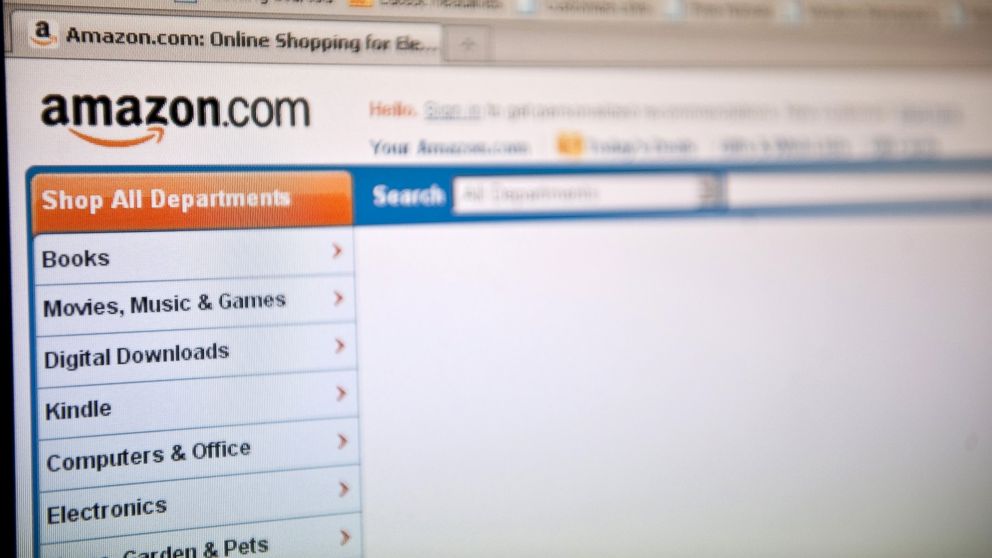How to Get a Discount on Amazon Products
Did you know that Amazon offers coupons on its site?

— -- You went for the convenience. Will you stay for the bargains? Amazon.com has come to embody its ambitious name by offering nearly every product under the sun and getting it to you before the sun has risen and set on more than two days (if you’re an Amazon Prime member, that is). But did you know you could be getting that gratification for less?
It’s true if you’re armed with some savvy tips and tricks. Hats off to bloggers Kyle James of Rather Be Shopping and Trent Hamm of The Simple Dollar for alerting me to some secrets. Now, on to the tutorial.
Amazon Coupons 1.0
As a consumer advocate, I love that Amazon offers coupons but I wish they were easier to find. First you have to click on “Today’s Deals,” which is located beneath the search box on Amazon's homepage. Then look for the link to "coupons" on the left-hand side under "Deal Type."
The coupon page is organized to show the “Most Popular” at the top and then “All Coupons” below that. You can also search by category. The categories are Prime Pantry (Amazon’s basic grocery service), Health and Personal Care, Grocery and Gourmet, Beauty, Office and School Supplies, Home and Kitchen, Pet Supplies, Automotive and Industrial, Electronics, Lawn and Tools, Sports and Outdoors and Toys and Baby.
Searching by category is somewhat more efficient, but still overwhelming, because some categories contain as many as 894 coupons when I last looked! For example, I had to scroll through hundreds of organic, vegan and grain-free dog treats before I found the one coupon that might be useful for my daughter’s two pet gerbils.
I kept wishing there was a way to search Amazon’s coupons by keyword. Which brings me to Amazon coupons 2.0, the advanced version.
I’m not the only one who wished for a way to search Amazon’s coupons and deals in a more efficient fashion. The folks at a website called Jungle-Search.com, an independent search engine just for Amazon, tackled the issue. The site lets you enter keywords, brand names, percentages off, maximum prices, Amazon fulfillment versus independent seller and more.
If you’re looking for a type of product rather than a particular brand, then a great strategy is to use Jungle-Search for a specific goal. For example, when I shop for clothing, I’m not excited by discounts of 10-30 percent off. So, in my case, I would set a minimum percentage off of 40 percent and see what I can find.
Amazon’s “Discount Percentage” Tool
If you’re too rushed (or lazy!) to open a separate browser window and try an outside search engine, at least experiment with Amazon’s own “Sort by” tool. At the top of each set of coupons you’ll see two boxes labeled in light gray. One says “Sort by” and contains what I consider useless things like “Newest” and “Most Popular” but also contains, at the very bottom, “Discount Percentage.”
Click on this and your chosen coupon category will be rearranged with the biggest percentage discounts at the top and the smallest at the bottom. It’s clunky, though, because some discounts are listed in dollars off and others in percentages off. I had to actually do the math to confirm for myself!
Combine Subscribe and Save With Coupons
There’s one final way to make those Amazon coupons work for you. I always preach that the best deals are when you use not one, but two or more savings methods in combination. Coupon kings and queens call it “stacking.” In this case, Amazon offers hundreds of discounts on mundane household products like toilet paper and paper towels if you subscribe, which means you sign up to have them delivered periodically, rather than having to remember to buy them each time you run out.
First look for these types of items in the coupon section. I chose laundry detergent and found one with a coupon for $2 off. When I clicked to the subscribe button I found I could save another $1.27 by making it a repeat order rather than a one-time purchase. Of course, don’t do this if you don’t want or need the recurring product, but what a weight off your mind — and your wallet — if you do.



